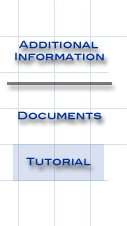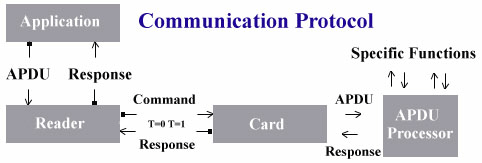 |
||||||||||||||||||||||||||||
 |
||||||||||||||||||||||||||||
 |
||||||||||||||||||||||||||||
 |
||||||||||||||||||||||||||||
| Smart cards follow a specific protocol when talking to the reader and/or the PC. One commonly mentioned phrase, T=0, T=1, is used to describe the protocol used to communicate to the card from the reader. T=0 is a byte oriented protocol in that every byte that is sent, an Acknowledgement must be received. With T=1, a specific length of bytes can be sent in a data block. Information is sent to the reader in hex code format. The Schlumberger Reflex 60 has the following commands: | ||||||||||||||||||||||||||||
|
||||||||||||||||||||||||||||
| A typical command to the card would include the reader command and also the card command. A Get Challenge command from a card would look like this: 0x67 0x00 0x05 0xC0 0x84 0x00 0x00 0x08 The first three bytes [ 0x67 0x00 0x05 ] indicate that the following command should be sent to the card. 0x05 is the size of the command that follows. [ 0xC0 0x84 0x00 0x00 0x08 ] is the actual card command for doing the Get Challenge. ISO standards set the way the commands are handled by the following command set standard: 0xC0 would be the class,[ 0x84 ] would be the instructions, and [ 0x00 0x00 0x08 ] would be the three Parameters. ([ 0x08 ] is the desired return size of the Get Challenge). |
||||||||||||||||||||||||||||